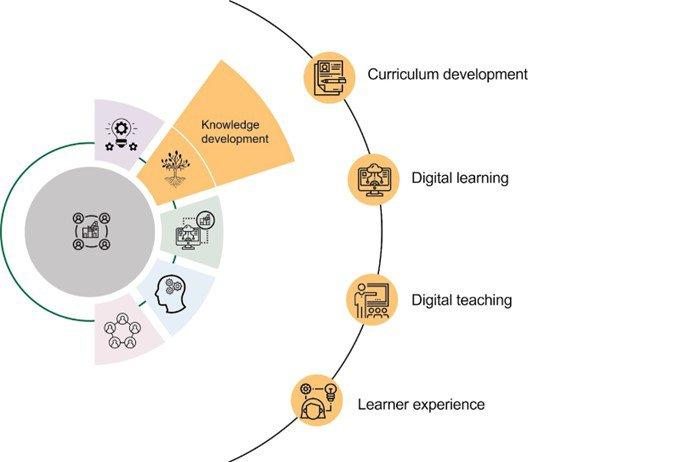Blended Learning Designer: Key Skills, Tools, and Strategies for Modern Education
Introduction
The educational landscape is rapidly evolving, and technology is at the forefront of this change. Institutions such as universities, colleges, and schools are increasingly embracing blended learning—an innovative model that integrates both face-to-face and online learning experiences. This shift has created a high demand for professionals specializing in the design and growth of immersive blended learning programs. If you’re seeking a career as a Blended learning Designer in education technology, understanding the key skills, tools, and strategies involved is crucial to standing out in this competitive field.
What is a blended Learning Designer?
A Blended Learning designer is an education technology expert dedicated to creating seamless and engaging learning experiences that combine traditional classroom instruction with digital resources.Thier role involves collaborating with educators,curriculum developers,and technology teams to enhance instructional delivery,improve learner engagement,and ensure academic goals are achieved.
Key Responsibilities of a Blended Learning Designer
- Analyzing instructional needs and learning outcomes.
- Designing and developing blended curricula and materials.
- Integrating educational technology platforms and digital tools.
- Supporting instructors in the transition to blended teaching models.
- Evaluating program effectiveness using data-driven methods.
- Ensuring accessibility and inclusivity for all learners.
- Staying updated with the latest trends in education technology.
Essential Skills for blended Learning Designers
succeeding as a blended learning designer in higher education or K-12 environments requires a blend of pedagogical expertise and technological proficiency. The following skills are particularly valued:
1. Instructional Design
- Knowledge of learning theories (e.g., ADDIE, Bloom’s Taxonomy, Global Design for Learning).
- Experience in designing blended or hybrid learning experiences.
- Ability to create engaging lesson plans and assessment tools.
2. Technology Integration
- Proficient in Learning Management Systems (LMS) such as Canvas, Moodle, or Blackboard.
- Familiarity with digital collaboration tools (Google Workspace, Microsoft Teams, Zoom).
- Understanding of multimedia production tools (Articulate Storyline, Adobe Captivate, Camtasia).
3. Project management
- ability to manage multiple projects and meet deadlines effectively.
- strong organizational and interaction skills.
- Experience with Agile or other collaborative project methodologies.
4. Data Analysis and Assessment
- Skill in collecting, interpreting, and utilizing learning analytics.
- Developing formative and summative assessments for blended courses.
5. Accessibility and inclusivity
- Adherence to universal design principles and accessibility standards (e.g., WCAG, ADA compliance).
- Designing content and tools suitable for diverse learners.
Key Tools used by Blended Learning Designers
Mastery of certain digital tools can set you apart in the job market for blended learning roles at universities, colleges, and schools. Here’s a look at some essential platforms and software:
- Learning Management systems (LMS): Canvas, Moodle, Blackboard, Schoology
- Collaborative Platforms: Google Classroom, Microsoft Teams, Slack
- Assessment Tools: Kahoot, Quizizz, Edpuzzle
- Content creation: Articulate Storyline, Adobe Captivate, H5P, Powtoon
- Multimedia Editing: Camtasia, Audacity, Adobe Premiere Pro
- Analytics & Reporting: Google Analytics, dashboard tools integrated in LMS
- Inclusive Technology: Accessibility checkers, captioning tools, screen readers
effective Strategies for Designing Blended Learning Experiences
crafting outstanding blended learning experiences requires thoughtful planning and a research-based approach. Consider these proven strategies:
- Start with Clear Objectives: Define measurable learning outcomes before designing content.
- Adopt a Learner-Centered approach: Use flexible models like flipped classrooms and personalized learning paths.
- Leverage Microlearning: Break content into digestible modules to promote retention and engagement.
- Foster Interaction: Promote peer-to-peer collaboration through discussion forums, group projects, and live sessions.
- Regular Feedback: Implement frequent, meaningful feedback mechanisms to monitor progress and motivate learners.
- Iterative Betterment: Use data analytics and learner feedback to continually refine courses.
Benefits of Pursuing a Career as a Blended Learning Designer
- High Demand: The growing emphasis on hybrid education models creates ample job opportunities.
- Impactful Work: Contribute to shaping the future of education and improving learning outcomes.
- Continuous Learning: Stay at the forefront of educational theory, pedagogy, and technology integration.
- Flexibility: Many positions offer hybrid or remote work options.
- Personal Fulfillment: Help teachers and students thrive in the digital age.
Practical tips for Job Seekers in Educational Technology
- Build a Strong Portfolio: Showcase your experience with instructional design projects, LMS modules, and blended learning initiatives.
- get Certified: Consider certifications such as ATD’s Instructional Design Certificate or Google for Education certifications.
- Stay updated: Join professional associations, follow edtech blogs, and attend industry webinars.
- Network: Engage with educators and designers through online communities and conferences.
- Emphasize Soft Skills: Highlight communication, collaboration, creative problem-solving, and adaptability in your applications.
- Demonstrate Results: Whenever possible, include metrics and success stories from previous projects.
Conclusion
The role of a Blended Learning Designer is central to shaping the future of education in universities, colleges, and schools. With the right mix of instructional design knowledge,technical skills,and innovative strategies,you can make a lasting impact on student success and institutional growth. By mastering the tools of the trade and embracing a mindset of continuous improvement, you’ll become a sought-after expert in the ever-evolving field of education technology. Start building your portfolio, expanding your skill set, and connecting with thought leaders to embark on a rewarding career as a blended learning designer. The journey to modernizing education begins with skilled professionals like you!

